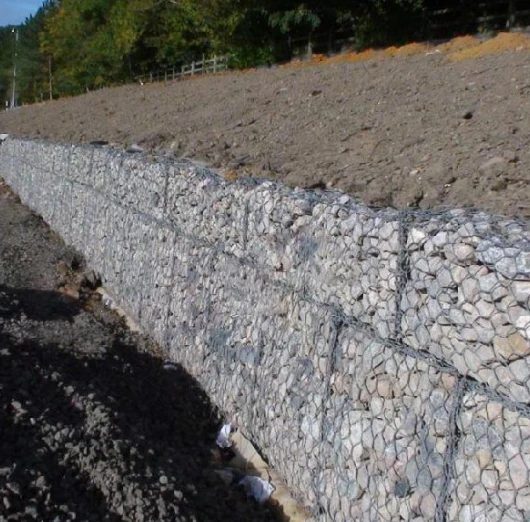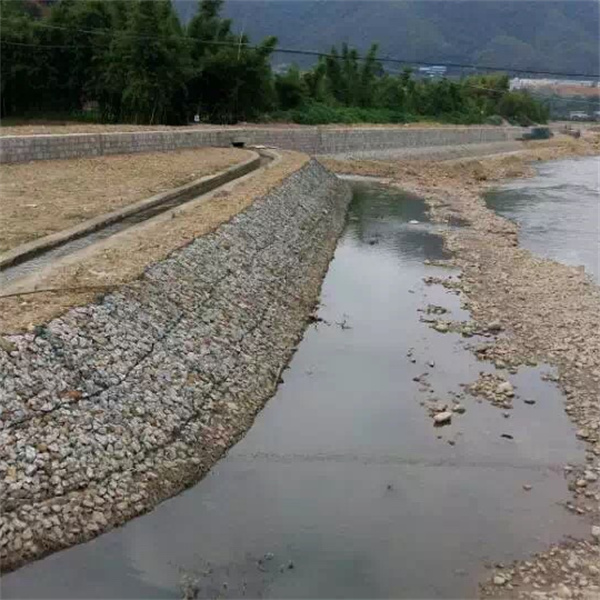ژوئن . 04, 2025 21:15 Back to list
Top Stone Cage Net Suppliers Durable & Eco-Friendly Solutions
- Market Demand: The Growing Need for Stone Cage Nets
- Technical Superiority: Engineering Advantages Explained
- Supplier Comparison: Key Differences in Manufacturing
- Material Specifications: Metals and Coatings Compared
- Custom Fabrication: Project-Specific Solutions
- Application Showcase: Erosion Control Success Stories
- Partner Selection: Stone Cage Net Factory Requirements

(stone cage net)
Understanding Stone Cage Nets in Modern Construction
Stone cage nets, known professionally as gabion systems, have evolved from basic erosion control into sophisticated engineered solutions. Global infrastructure projects now consume over 450 million square meters annually, with growth projected at 6.8% CAGR through 2028. Coastal protection initiatives account for 42% of this demand, particularly in regions experiencing accelerated climate change effects. The fundamental design involves double-twisted hexagonal wire mesh containers filled with local stone, combining structural integrity with environmental permeability.
Transportation authorities report 30% lower lifecycle costs compared to concrete alternatives, largely due to minimal maintenance requirements. When properly installed, these structures can withstand hydraulic forces exceeding 15 m/s water velocity. Recent developments include polymer-coated variants capable of resisting marine environments for 50+ years and hybrid systems incorporating geotextiles for challenging soil conditions.
Technical Advantages Driving Adoption
Unlike rigid structures, stone cage net
s distribute stresses dynamically through their wire framework and stone infill. This creates three distinct technical benefits:
First, hydraulic permeability prevents damaging backpressure build-up during flood events. Water flow rates through gabion walls measure between 15-30 L/m²/s, significantly reducing hydrostatic loading. Second, structural settlement occurs without catastrophic failure due to the flexible nature of the wire baskets. Testing shows gabions maintain functionality even after 12% deformation – impossible for concrete alternatives.
The third advantage emerges in environmental performance. Aggregate placement creates habitats supporting 37% greater biodiversity than smooth surfaces according to ecological studies. Additionally, the use of locally quarried stone cuts carbon emissions by up to 62% compared to concrete alternatives by eliminating long-distance material transport.
Supplier Manufacturing Capabilities Compared
| Supplier Type | Production Capacity | Specialized Machinery | Lead Times | Quality Certification |
|---|---|---|---|---|
| Large-scale factories | 80,000+ m²/month | Automated panel welding lines | Standard 15 days | ISO 9001, CE, TÜV |
| Regional specialists | 15,000-30,000 m²/month | Semi-automated twisting machines | Express 7 days | ISO 9001 local standards |
| Custom fabricators | Project-based capacity | CNC cutting systems | 28+ days complex orders | Project-specific testing |
Leading stone cage net suppliers differentiate through automation levels and material expertise. Top-tier operations employ robotic welding cells achieving ≤0.8mm tolerance consistency. Specialized facilities maintain dual coating lines offering both conventional zinc galvanization and advanced Galfan (95% zinc + 5% aluminum alloy) protection. Quality-focused producers perform daily salt spray testing on sample wires, achieving consistent corrosion resistance ratings exceeding 1,200 hours before initial red rust formation.
Material Engineering and Corrosion Resistance
Wire specification determines longevity more than any other factor. Standard options include:
Galvanized steel: 220-300g/m² coating providing 20-30 years service in moderate environments. Cost: $15-18/m²
Galfan alloy: Advanced metallurgy delivering 2-3× standard galvanization lifespan. Cost premium: 20-25%
PVC-coated: 0.5mm polymer sheath over galvanized base adds ultraviolet protection. Essential for marine installations. Cost: $27-32/m²
Breaking strength ranges from 350-500 MPa depending on wire diameter, typically between 2.0-4.0mm. Sophisticated stone cage net factories now offer mesh pattern optimization services, increasing rip resistance at connection points by 40% compared to standard hexagonal configurations. Recent innovations include sacrificial anode systems for coastal projects, extending functional lifespan beyond 75 years in aggressive saltwater environments.
Custom Fabrication for Complex Projects
Beyond standard rectangular baskets, engineering firms increasingly require tailored solutions. Advanced stone cage net factories respond with:
Parametric modeling for geologically unstable sites requiring specialized tensile characteristics; pre-filled modular units for underwater installation in swift currents; and hybrid systems integrating tensioned cable networks for high-traffic slope stabilization. A recent Asian infrastructure project employed tapered baskets decreasing from 4m to 1.5m heights along a 2.3km erosion zone, all manufactured with customized connection points for seismic reinforcement.
Premium suppliers maintain engineering teams capable of creating project-specific design calculations covering:
- Hydraulic force distribution simulations
- Seismic movement accommodation
- Slope stability factor analysis
- Environmental impact mitigation protocols
Global Application Case Studies
Transportation networks present demanding implementation challenges that demonstrate engineering effectiveness:
Scotland's A83 Rest and Be Thankful roadway required repeated reconstruction after landslides. Post-installation monitoring shows gabion structures absorbed 65,000m³ of debris during extreme weather since implementation, preventing road closures. The Norwegian Coastal Highway Project incorporated marine-grade stone cage nets protecting foundations against North Sea tidal forces. After eight years, less than 5% deformation occurred despite exposure to 90km/h wind-driven waves.
Mining operations in Australia utilize specialized rockfall drapery systems capable of absorbing 5,000 kJ impacts - equivalent to 20-ton boulders falling 25 meters. Thermal imaging analysis confirmed these installations reduced slope temperatures by 11°C, mitigating subsurface ice melting that previously caused instability.
Evaluating Stone Cage Net Factories
Selecting manufacturing partners requires verifying specific capabilities. Quality-focused producers will provide material traceability through MTC (Material Test Certificates) verifying wire tensile strength and coating thickness. Assess production consistency through random sample measurement protocols - basket dimensions should vary ≤1% from specifications.
Demand documented performance history in projects similar to your requirements. Reputable stone cage net suppliers typically maintain case libraries with monitoring reports showing actual performance against design calculations. Crucially, audit their internal testing facilities - ISO-certified factories conduct daily salt spray tests and retain samples for independent verification. Prioritize manufacturers investing in advanced anti-corrosion treatments like thermal diffusion galvanizing or stainless steel wire options rather than those relying solely on conventional coatings.

(stone cage net)
FAQS on stone cage net
Q: What is a stone cage net used for?
A: Stone cage nets are wire mesh containers filled with stones, primarily used for erosion control and slope stabilization in civil engineering. They provide structural reinforcement for riverbanks, coastal defenses, and highway embankments. The permeable design allows water flow while preventing soil displacement.
Q: How do I verify stone cage net suppliers?
A: Assess suppliers through certifications (ISO 9001), material quality tests (galvanization standards), and project portfolios. Request samples to verify wire gauge strength and coating durability. Reputable suppliers offer technical documentation confirming compliance with international construction specifications like EN 10223.
Q: What capabilities define a reliable stone cage net factory?
A: Key capabilities include automated welding systems for uniform mesh production, in-house alloy coating facilities (e.g., Galfan), and custom fabrication tools for site-specific dimensions. Top factories implement strict quality control at all stages and possess large-scale bending machinery for high-volume projects like dam construction.
Q: Why choose specialized stone cage net factories over general manufacturers?
A: Specialized factories ensure precision in mesh geometry and tensile strength critical for load-bearing applications. They maintain dedicated R&D for corrosion-resistant coatings and offer engineers’ support for structural calculations. This expertise reduces installation failures compared to generic wire mesh producers.
Q: What logistics services do stone cage net suppliers provide?
A: Leading suppliers offer compression-packaging to maximize container loads, reducing shipping costs by 40%. They coordinate door-to-door delivery with anti-corrosion wrapping and provide assembly diagrams for complex installations. Many maintain regional warehouses for urgent project demands like flood prevention emergencies.
-
Visualizing Gabion 3D Integration in Urban Landscapes with Rendering
NewsJul.23,2025
-
The Design and Sustainability of Gabion Wire Mesh Panels
NewsJul.23,2025
-
The Acoustic Performance of Gabion Sound Barriers in Urban Environments
NewsJul.23,2025
-
Mastering the Installation of Galvanized Gabion Structures
NewsJul.23,2025
-
Gabion Boxes: Pioneering Sustainable Infrastructure Across the Globe
NewsJul.23,2025
-
Custom PVC Coated Gabion Boxes for Aesthetic Excellence
NewsJul.23,2025
-
Installation Tips for Gabion Wire Baskets in Erosion Control Projects
NewsJul.21,2025






